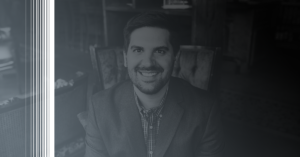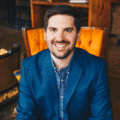
When someone like me — a procrastinator — was trying to settle on a name for this new clinic it was quite a process. For me to love it, the name itself had to communicate how I practice and also stand the test of time — it couldn’t be trendy today and out of style in eight years. After hours and hours of thought and an extensive list of options and variances, my wife and I landed on Lincoln Performance and Sports Medicine (LPSM, @sportsmedlincoln). Even though it can be a bit of a mouth full, it hits on my goal and encompasses the scope of possibilities of this practice.
We’ve already dug into “performance” and “sports medicine,” so let’s talk about, “The Art & Science of Movement,” which is represented in our logo as “the blend.”
Art
the expression or application of human creative skill and imagination, typically in a visual form such as painting or sculpture, producing works to be appreciated primarily for their beauty or emotional power.
Science
the intellectual and practical activity encompassing the systematic study of the structure and behavior of the physical and natural world through observation and experiment.
Movement
an act of changing physical location or position or of having this changed.
The foundation of how I practice is at the center point where creativity, imagination, intellectual capacity and practical activity collide. Without even one of these elements, I would not be as successful as I have been with so many of my patients.
I believe as health care practitioners that we have to have the creativity to combine research and techniques. We have to have the imagination to push the boundaries of what is expected and standardized in conservative care. We have to have the intellectual capacity to go beyond our own discipline. We have to have the ability to translate data and research into practical application.
I am building LPSM in a way that it is constantly striving toward this never-ending blend of the art and science of movement from the day-to-day to the elite athlete.
The Art
An in-depth evaluation that pulls from multiple disciplines and techniques is critical to discovering the why behind someone’s pain or the how in terms of possible performance improvement. Hands-on aspects of treatment are also an art that is truly refined over time. I can tell you my hands-on techniques have absolutely improved since I started practicing 10 years ago.
Practically, the art comes to me through:
- Eyes. When observing someone move — walking down the hall, pitching a baseball or shooting a basketball — does the clinician have the ability to pick up on strengths and weaknesses of those movements?
- Communications. Putting a patient’s fears and anxieties to rest and instead of creating worry, creating an efficient and reasonable plan.
The Science via Research
As health care providers it is imperative that we use evidence-based treatment and learn from credible research and the experiences of colleagues when making decisions about the best possible treatment. I often tell my patients — and the students I teach — that you could pick a treatment in the world from the most “voodoo” to the most researched and you will have success, failures and everything in between.
The question is, if 10,000 people came in with low back pain, what percent of those will get better? So when we look at huge amounts of data and large numbers of people, we can see what is successful for the largest number.
The 2017 study, “Effective treatment options for musculoskeletal pain in primary care: A systematic overview of current evidence,” shows the percentages of people who improve with each method of treatment.
From a conservative standpoint exercise is the most effective means, which is why my treatment room has more than enough space and equipment to not only provide treatments lying on a table but also to perform active exercises. In addition to that the space shares a wall with an entire gym, providing my patients access to nearly every exercise that exists.
However, when we look at this study, we can also see there are hands-on types of treatments that are also effective just with less consistency. It doesn’t mean they don’t “work” for some people, it just means probably a few less in that group of 10,000.
The Science via Technology
From a technology standpoint, I am currently using force plates and 3D motion capture to collect objective data on my patients when their case warrants or they are interested in the process. I look forward to sharing a whole lot more about this in the coming months.
At the end of the day, I believe that when we can to the best of our abilities combine the art and science of musculoskeletal care we will have a positive effect on the greatest number of people out of 10,000. While understanding we will never get 100% of those better. I would be willing to put my percentage rate of improvement against anyone!

DR. TYLER IDEUS
Contact Me



